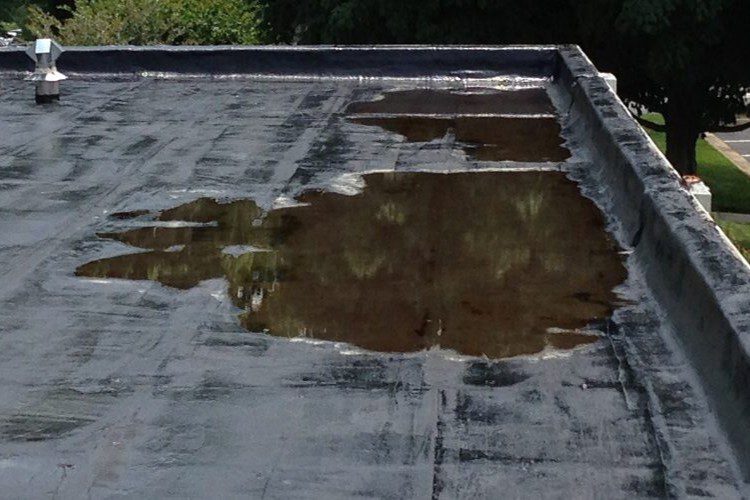In roofing, the quest for energy efficiency and thermal performance has been a journey marked by innovation and adaptation. Among the key players in this narrative is the evolution of insulation materials, particularly polyisocyanurate insulation, which has undergone significant changes in its R-value over the years. In this blog, we’ll look into the significance of 5.2” insulation specified as “R30” in roofing, its uses, benefits, and the historical context that has shaped its prominence today.
The Historical Context
Traditionally, the R-value per inch of polyisocyanurate insulation stood at 6.0. However, on January 1, 2014, this value was revised downward to 5.7 after extensive testing regarding its long-term performance. The shift in R-value specifications largely corresponded with changes in energy codes. For instance, the R-value requirement increased from 20.0 to 25 in 2013, necessitating thicker insulation (3.3″ to 4.4″). Fast forward to August 2020, and Massachusetts raised the bar further, mandating an R-value requirement of 30, which was followed by Rhode Island in February 2022, leading to the specification of 5.2″ insulation.
Understanding R-30 Insulation
When 5.2” insulation is specified as “R-30” in roofing, it signifies a thickness of insulation material that offers thermal resistance equivalent to R-30. This level of insulation is crucial for meeting energy efficiency standards, enhancing thermal performance on roofs, and ensuring compliance with building codes, particularly in regions with moderate to cold climates. The industry’s increasing requirements for R-value is reflecting a growing emphasis on improved sustainability and reducing energy consumption in commercial building design and construction across the country.
R-30 Zone Map: Energy Code Requirements

This map provides insights into the areas mandating R-30 insulation standards according to the International Energy Conservation Code (IECC), categorized by climate zones. It serves as a vital reference for stakeholders aiming to adhere to energy efficiency regulations. The IECC sets fundamental benchmarks for energy conservation across building components, including the building envelope, mechanical systems, lighting, and water heating systems in residential and commercial structures.
Top Benefits of R30 in Roofing
- Improved Energy Efficiency: R-30 insulation helps minimize heat loss through the roof, reducing the need for heating in winter and cooling in summer, thereby lowering energy bills and carbon emissions.
- Enhanced Thermal Performance: The higher R-value of polyisocyanurate insulation provides superior thermal resistance, creating a more comfortable indoor environment and reducing temperature fluctuations.
- Moisture Resistance: Polyisocyanurate insulation is inherently moisture-resistant, making it suitable for roofing applications where exposure to weather elements is a concern. This helps prevent mold growth and structural damage.
- Durability and Longevity: R-30 insulation is known for its durability and long lifespan, offering reliable performance over the years with minimal maintenance requirements. On a well-maintained roof system, polyisocyanurate insulation can be re-used when a second roof is installed 25-30 years later.
- Space Efficiency: Despite its higher R-value, polyisocyanurate insulation is lightweight and space-efficient, allowing for easy installation and maximizing building usable space. It has one of the highest “R” values per inch.
Applications and Cost Considerations
R-30 polyisocyanurate insulation is commonly used in new roofing installations and roofing replacements, especially in regions with stringent energy codes or where climate conditions necessitate superior thermal performance. It is suitable for various roofing systems, including flat, low-slope roofs, and metal roofs. When selecting insulation thickness, factors such as local building codes, climate considerations, and energy efficiency goals should be considered.
While the initial cost of R-30 insulation may be higher compared to lower R-value options, its long-term benefits in terms of energy savings and durability often outweigh the upfront investment. Additionally, the cost per square foot of insulation varies depending on thickness, with thicker insulation generally commanding a higher price but offering better thermal performance.
Trust The Professionals at Chaffee Roofing
In conclusion, 5.2” insulation specified as “R-30” in roofing represents a significant milestone in pursuing energy-efficient building and roofing practices. As building codes evolve and environmental concerns mount, adopting high-performance insulation materials like polyisocyanurate becomes increasingly essential. By embracing R-30 polyisocyanurate insulation, builders, contractors, and homeowners can create more sustainable, comfortable, and resilient built environments for generations to come.
At Chaffee Industrial Roofing, we have extensive experience providing different commercial roofing services such as roof replacement, roof repairs, roof maintenance, and more.
Get a Free Consultation Today!
Whether you have questions about roofing isolation best practices or the commercial roofing process or want to discuss your commercial roof’s needs further, our team of roofing experts is ready for your call. Call Chaffee Roofing today!
